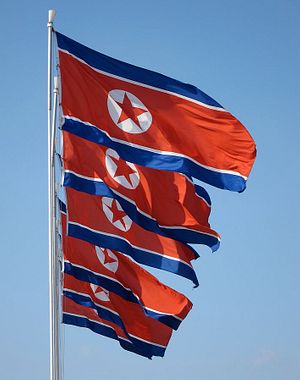The recent false alert of a ballistic missile launch in Hawaii has put the United States (and the world) on edge, but some argue that the hype overstates the chances for war. In particular, two recent articles at the Washington Post’s Monkey Cage blog argue that news accounts are overestimating the chance for hostilities. A post by Elizabeth Saunders and Michael Horowitz suggests that press accounts have over-hyped the prospects of war with North Korea, while Dan Reiter argues that the chances for war are really quite low.
Saunders and Horowitz argue, notwithstanding concerns over the stability of leadership in both Pyongyang and Washington, the military situation between North Korea and the United States is characterized by high-cost strategic stability; either side can impose unacceptable costs on an attacker. Reiter notes that pre-emptive wars are rare, that neither North Korea nor the United States believe that there is currently much advantage to striking first, and that communications between the U.S. and North Korea aren’t as bad as some accounts suggest. Essentially, both the Reiter and the Horowitz-Saunders articles argue that structural conditions weigh heavily against war; North Korea cannot win a conventional war, but it has the capacity to inflict heavy damage on the U.S.-South Korea coalition under most plausible conflict scenarios.
These posts are laudable in the sense that they attempt to correct a distressing tendency to overstate the likelihood for war. However, they may understate the actual chances of conflict. In particular, these models do not take into sufficient account the idea of a disarming conventional first strike. If either the United States or North Korea believes in the potential for a disarming conventional first strike, then some of the structural impediments to war effectively disappear.
North Korea operates what is, in many ways, a 20th century military organization. The United States has spent the last 40 years developing capabilities designed to induce the collapse of 20th century military organizations. Thinking along these lines began in the 1970s, and accelerated in the 1990s. Precision attacks against communications and logistical nodes, supported by widespread electronic warfare, can strain the sinews that hold an army together. Attempts to induce organizational collapse failed in the 1991 Gulf War; the Iraqi Army maneuvered under pressure and retreated in good order. In 2003 they came much closer to succeeding, with much Iraqi forces suffering paralysis and disintegration in some cases.
U.S. planners do not appear all that optimistic about the prospects of a disarming conventional first strike, but the Trump administration has repeatedly, and publicly, discussed the prospects of a limited strike against North Korean nuclear and ballistic missile facilities. Unfortunately, North Korea may not be able to distinguish between a limited strike and the beginning of a disarming first strike. And if the North Korean leadership is concerned about the military imbalance, and in particular its ability to manage the KPA, then it may escalate more quickly than the United States hopes, or expects.
Sorting through odds of war is a difficult business; a 5 percent chance of war over the next year is considerably more dangerous than a 1 percent chance, but doesn’t mean that war is likely. And if the crisis passes without war, then skeptics will understandably draw vindication. But we should take care in applying general principles of conflict to the unique conditions of the U.S.-Korea balance; these principles should inform our inquiry, and help us frame the specifics of the relationship. But we need to appreciate these factors in context of how the actors themselves understand them, and perceived improvements in U.S. military technology may have changed the payoffs for pre-emption.
































